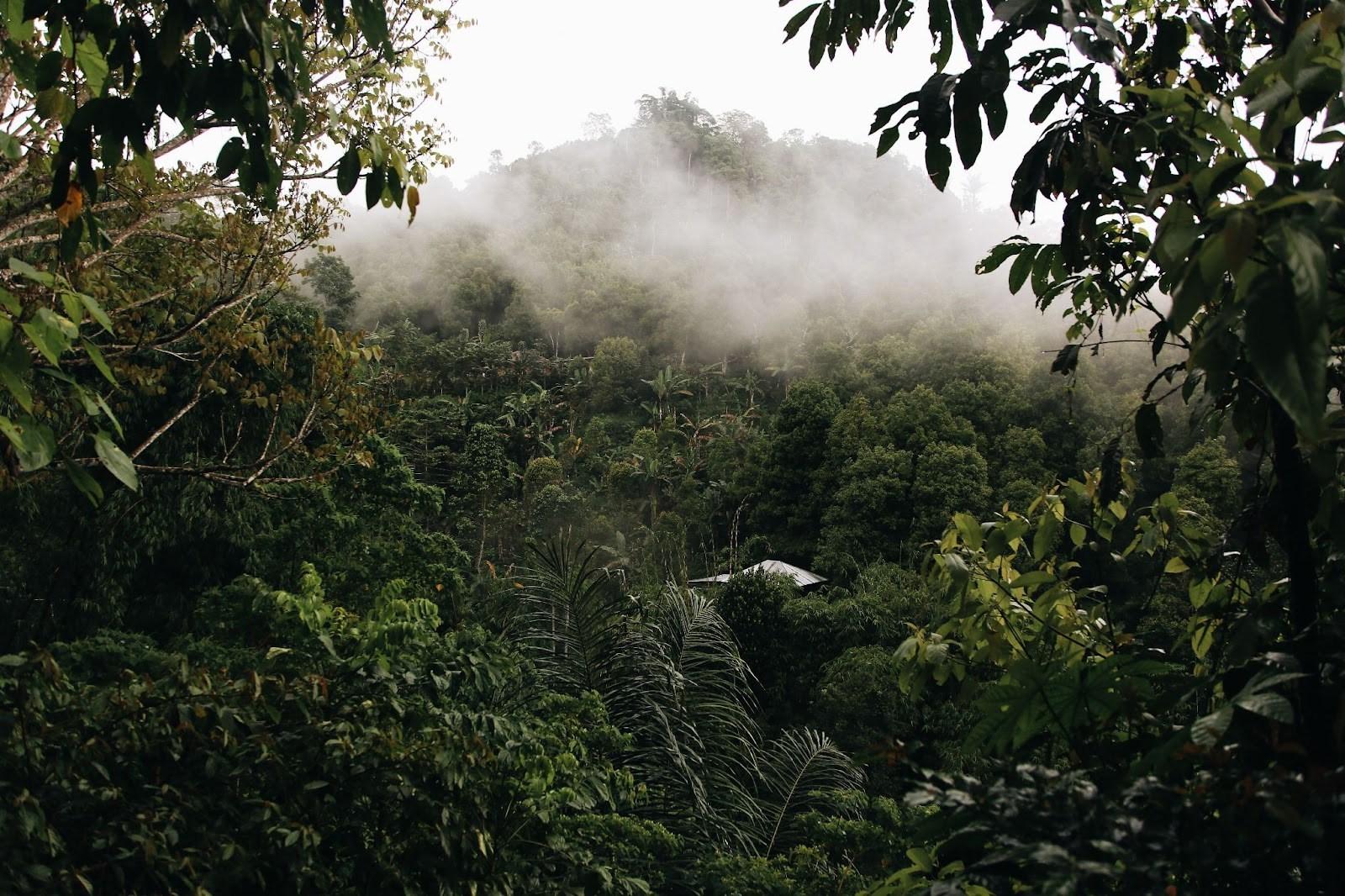
4 minute read
A Lesson in Reforestation: Costa Rica’s Success Story
By Mia Weinberg
Costa Rica, the small yet incredibly biodiverse Central American country is known for its pristine natural wonders including protected rainforests, black sand beaches, and numerous volcanoes. It has been praised for being a world leader in conservation, sustainability, and carbon neutrality. However, this was not always the case. Just three decades ago, loggers had destroyed over half of Costa Rica’s rainforest to clear land for agriculture and cattle ranching (Konyn, 1). Today, one million hectares (2.5 million acres) of this land has been reforested due to government programs and the efforts of thousands of stewards of the land. It was the first tropical nation to not only stop deforestation, but reverse it. Just how has Costa Rica managed to return so much land to its natural lush state, and what can we learn from them?
Before the Costa Rican government offered incentives for reforestation, it incentivized mass deforestation for 28 years. When fast food began to gain popularity in the US, Costa Rica responded to the unprecedented demand for beef by offering financial incentives to landowners who used their land for cattle ranching. The government charged a tax on land that was considered “unproductive,” including rainforests. This meant that many landowners could not afford to keep their land forested, even if they wished to. The story of Costa Rican coffee grower Arturo Echandi Jimenez highlights the financial and ecological pressure placed on landowners at the time. In 1939, Jimenez purchased 1,112 acres of pristine rainforest in central Costa Rica (Rodriguez, 1). He cleared about ⅕ of the land for his coffee farm, which allowed him to make a living for his family while preserving hundreds of acres of rainforest. The tree cover of the forest even provided optimal conditions for his coffee plants. When the government began taxing land that was not used for cattle ranching, Jimenez had no choice but to cut down all of his rainforest for cattle so that his business would stay afloat. Although he had no interest or experience in raising cattle, Jimenez, like thousands of Costa Rican farmers, was given no choice. The damage caused by these policies was colossal. In 1940, forest covered 75% of Costa Rica’s land. By 1995, it only covered 25%


(United Nations, 2). Finally, the government responded in the form of a new economic incentive program. The Ministry of Environment proposed a plan that would allow landowners to continue to make a living, but placed monetary value on ecosystem services rather than ecosystem destruction. The Payment for Environmental Services (PES) program paid farmers for the carbon sequestration, and biodiversity of their land. Instead of incentivizing people to destroy forest, the government was paying farmers to restore it. The governmental shift in ethics took some adjustment for many landowners. Jimenez, whose grandson helped to develop the PES program, first responded with “I thought trees had lumber, not carbon” (Rodriguez, 3).
This illustrates the psychological effect that previous policies had on landowners. They were conditioned to approach nature with a utilitarian attitude, placing value on the commodification of resources rather than their value in an ecosystem. PES has also been a tool for poverty reduction and education. Landowners are now aware of the benefits of carbon sequestration and water filtration, and are paid to be stewards of the land. Today, thousands of landowners in Costa Rica take pride in the beauty of their forested land, and the thousands of species that it supports. Natural resources are invaluable to every species on the planet, and the simple recognition
of this can completely shift our relationship to forests, seas, and mountains. Even after a dark period of destruction, Costa Rica was able to reverse much of the damage that was done to its land and become a world leader in reforestation. Their story can serve as a lesson to all of those losing hope for the planet’s future; positive change is always possible.


References
alleksana. (2020). Green Trees Covered With Fog. Pexels. photograph. Retrieved October 31, 2021, from https://www.pexels.com/photo/wood-light-dawn -landscape-4239623/.
Hartmann, L. (2018). Herd of White-and-black Cows on Grass Field. Pexels. photograph. Retrieved October 31, 2021, from https://www.pexels.com/photo/ herd-of-white-and-black-cows-on-grass-field1276237/.
What to do in Tortuguero National Park in Costa Rica. (2021). City Express Hotels. Retrieved December 21, 2021, from https://www.cityexpress.com/en/ travel-blog/tortuguero-national-park-naturalsanctuary-the-costa-rican-caribbean
Konyn, C. (2021, October 28). How Costa Rica reversed deforestation and became an environmental model: Earth.org - past: Present: Future. Earth.Org - Past | Present | Future. Retrieved October 31, 2021, from https://earth.org/how-costa-rica-reversed -deforestation/.
Lewis, N. (2020, July 27). This country regrew its lost forest. can the world learn from it? CNN. Retrieved October 31, 2021, from https:// www.cnn.com/2020/07/27/americas/reforestationcosta-rica-c2e-spc/index.html.
Rodriguez, C. M. (2014, October 24). How Costa Rica has been unlocking the value of its rainforest. Greenbiz. Retrieved October 31, 2021, from https:// www.greenbiz.com/article/how-costa-rica-has-beenunlocking-value-its-rainforest.
United Nations. (n.d.). Payments for Environmental Services Program | Costa Rica . United Nations Framework Convention on Climate Change. Retrieved October 31, 2021, from https://unfccc.int/ climate-action/momentum-for-change/financing-forclimate-friendly-investment/payments-forenvironmental-services-program.





